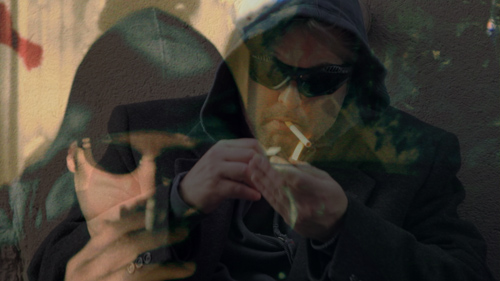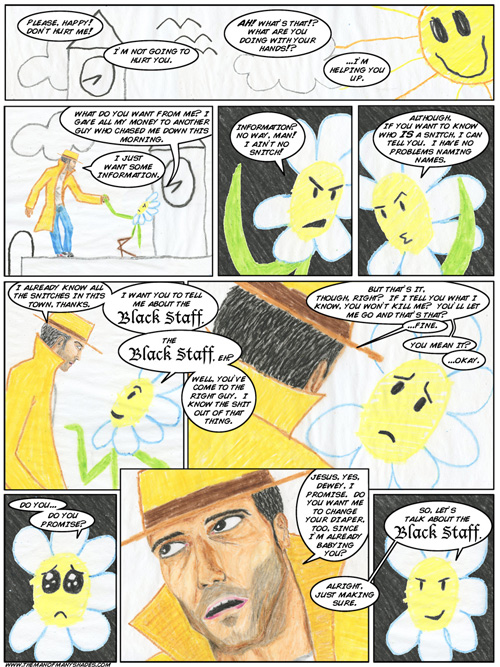This astounding 2003 documentary by Thom Andersen takes what I am certain is the most thorough look ever at how films, both popular and obscure, have depicted the city of Los Angeles. Through the accumulation and precise organizing of clips, Andersen actually describes the essential heart of Los Angeles better than anyone I have seen before. Unfortunately, the film has never been released due to rights issues with some of the clips in the film. I can’t imaging what those issues might be since this all looks like fair use for a documentary to me. This is quite obviously a journalistic essay and he has every right to use the clips in short portions.
The film’s narration has a sort of dry weariness that tends to fit the general tendency toward crime or noirish films and their views of the city. His description of the brutal destruction of Bunker Hill is a masterpiece of documentary filmmaking, illustrating the horror of a corporate dead zone built on top of a once vibrant and colorful community that served as inspiration to many down-at-the-heel artists like John Fante, the great Los Angeles novelist who wrote ‘Ask the Dust.’
Andersen moves through a dizzying array of films including, Point Blank, Zabriskie Point, Double Indemnity, The Outsider, The Exiles, Kiss Me Deadly, Chinatown, The Omega Man, Blade Runner, Heat, Rebel Without a Cause, and many many more. It’s a tour with attitude through Hollywood’s fascination with Los Angeles. It’s also a look at how wrong many depictions of the city have been – how twisted, altered, faked and misrepresented L.A. has been. The film is a lifelong Los Angeles resident who knows what’s missing in the superficial portraits of the city and gets mad about it. But in general, Andersen’s film gradually and unremittingly builds a detailed portrait of the city like no other portrait ever attempted. He reserves some snide comments for a director that I have always considered to be one of the best at portraying L.A., Michael Mann. Andersen’s comments about the characters of ‘Heat’ who live in the hills overlooking the flats of L.A. are accurate but somewhat literal. Here’s an article that Andersen later wrote about Mann’s film ‘Collateral’ which was apparently an improvement on the city’s portrayal.
But Andersen’s irritation with fakery and distortion are what make this film work. He insists on showing the false, exposing it for what it is, and then showing us a contradictory viewpoint. One of the kickers in this magnificent film is when Andersen makes a very obvious and clear note of Steve Martin’s racist perspective on Los Angeles in ‘L.A. Story,’ where any non-white character must work in a restaurant. Frankly, I’m so tired of hearing about how brilliant the idiotic and dull Martin is that I vote for this film on that basis alone! He has scathing remarks for writers like Joan Didion who wrote about car culture, maintaining that nobody walked in L.A., but really meant to say that no rich white people walked in L.A. Meanwhile, the city has always had a huge and fully utilized mass transit system.
A further thought that comes to me while watching this film is that over the past 100 years, racism in the U.S. has in fact been led and encouraged by Hollywood. The mass majority of its product over the decades has portrayed non-whites in demeaning fashion. The treatment of black characters throughout the Hollywood studio heyday is an embarrassment to the nation. All you need to know about Hollywood is on view in any Spencer Tracy/Katherine Hepburn romantic comedy. Just watch the way they treat their household employees. Casual and appalling.
I found this film while working on my own Los Angeles film that looks at the city through the prism of the imagination as conditioned by films. But my film looks at this distortion as actually being the real heart and living soul of the city. What makes Los Angeles the greatest American city is precisely its hidden history, its distorted images, and its ability to exist in different forms entirely within the imaginations of people who think they live there. There are vast numbers of people who live and work in Los Angeles who have never actually seen Los Angeles. When you summon the false gods and demons of L.A. they actually appear.
Part 2:
Parts 3 – 12 after the jump…
Continue reading …
 This is a Los Angeles crime film. But it’s as if several films on celluloid fused together and what you end up with is an art film that gets overwhelmed by urban documentary and then collapses into a narrative thriller. It’s filled with hints, clues, evidence and misdirection. Images, ideas and sounds bounce off each other, mirror each other. There are secrets in this film. You have to watch carefully, through layers to catch things. I’ve tried to make a film that moves like disjointed thoughts toward the preordained ending. Continue reading
This is a Los Angeles crime film. But it’s as if several films on celluloid fused together and what you end up with is an art film that gets overwhelmed by urban documentary and then collapses into a narrative thriller. It’s filled with hints, clues, evidence and misdirection. Images, ideas and sounds bounce off each other, mirror each other. There are secrets in this film. You have to watch carefully, through layers to catch things. I’ve tried to make a film that moves like disjointed thoughts toward the preordained ending. Continue reading
